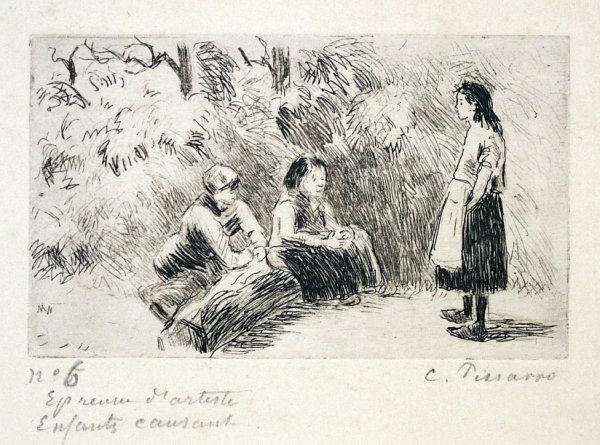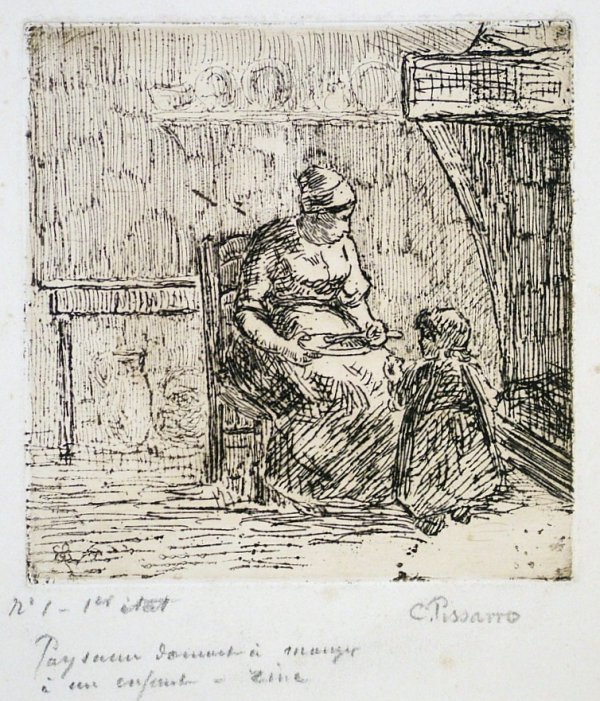Camille Pissarro Etchings
Around 200 etchings and lithographs by Camille Pissarro were created between the years of 1863 and 1902. Technically, through his manipulation of etching plates, he stretched the limitations of the medium. Pissarro was so enthused by the medium, in fact, that he bought his own printing press in 1894. To create prints with impressionistic effects, he experimented with Edgar Degas, and Degas also created colour proofs of some of Pissarro’s etchings.

Among the most difficult times of Camille Pissarro’s life came in the late 1870s. Pissarro was severely impacted by the economic depression that was then sweeping through Europe because he was never affluent enough to live in Paris and was dependent on the support of the urban bourgeoisie. Since the market had not yet warmed to Impressionism, Pissarro’s dealer, Paul Durand-Ruel, frequently flirted with bankruptcy and was unable to provide him with a steady income. The middle-aged painter struggled to support his wife and three sons and thought about giving up his profession totally.
Pissarro didn’t give up his profession. Instead, he began a new period of aesthetic experimentation with copperplate etching, a media he had only had passing exposure to before.

According to Michel Melot, an art historian, Pissarro’s etchings from 1879–1880 “represent the high point of the Impressionist style.” They clearly demonstrate a novel approach to sketching and printing as well as, most importantly, a novel conception of reality. This was a reality that had undergone profound change as a result of innovations in mass printing and photography in the 19th century.
